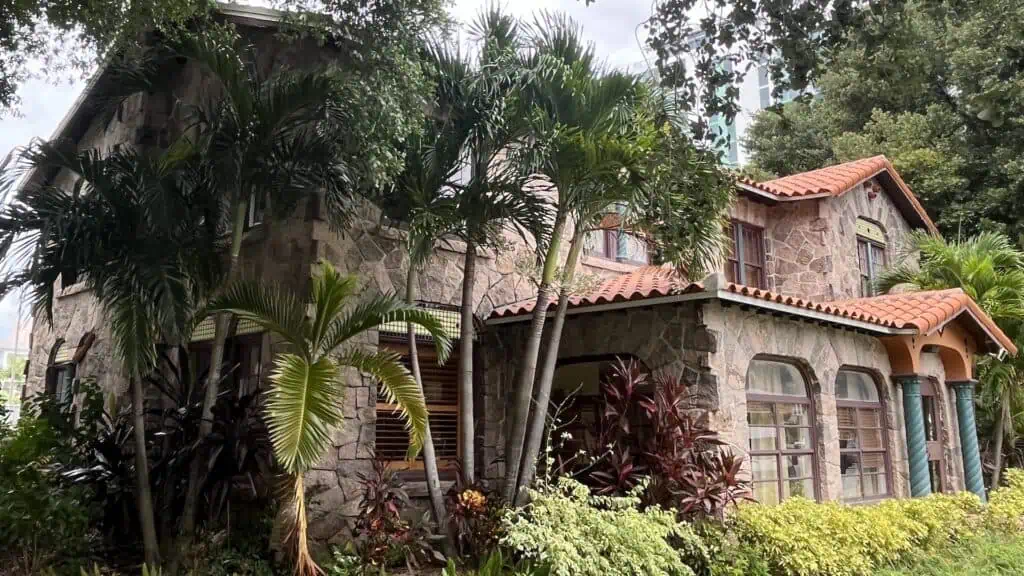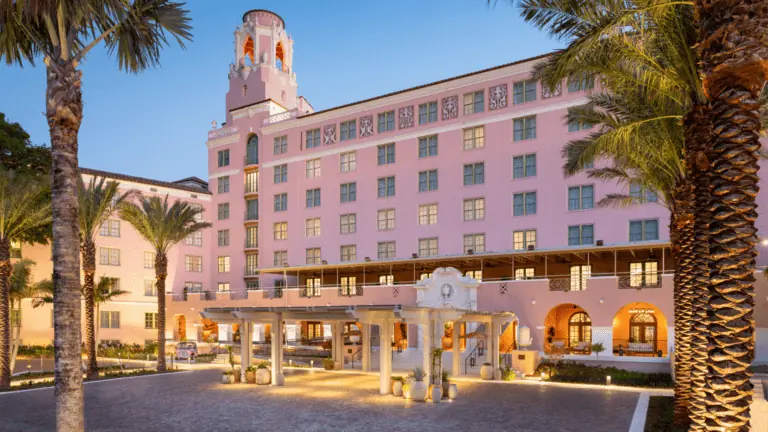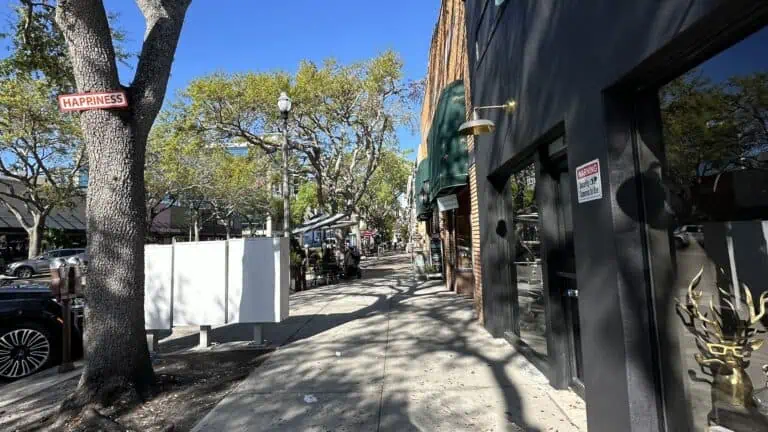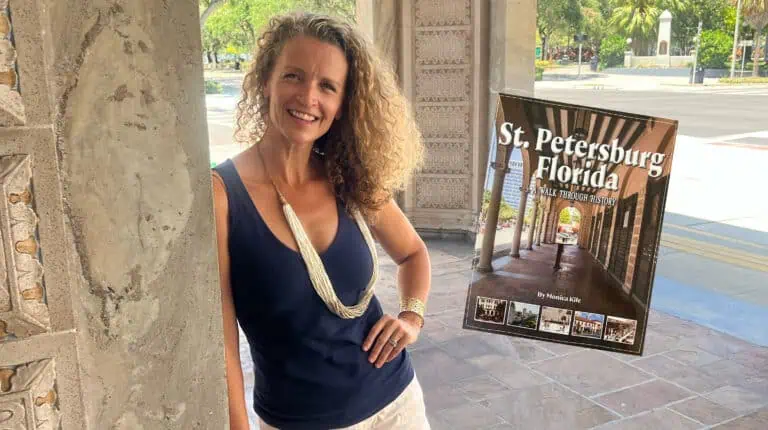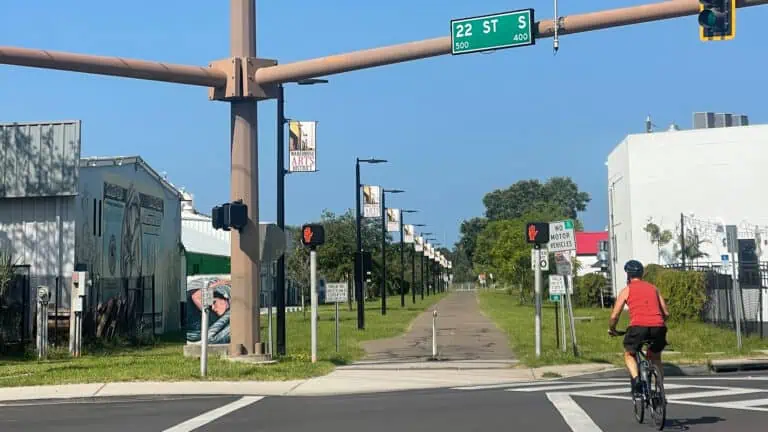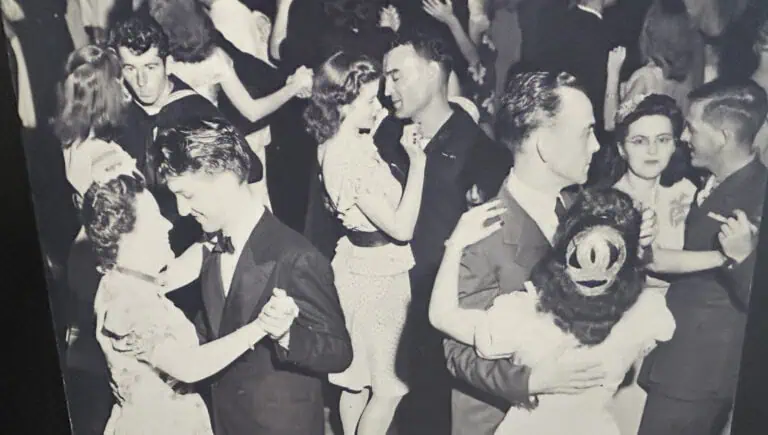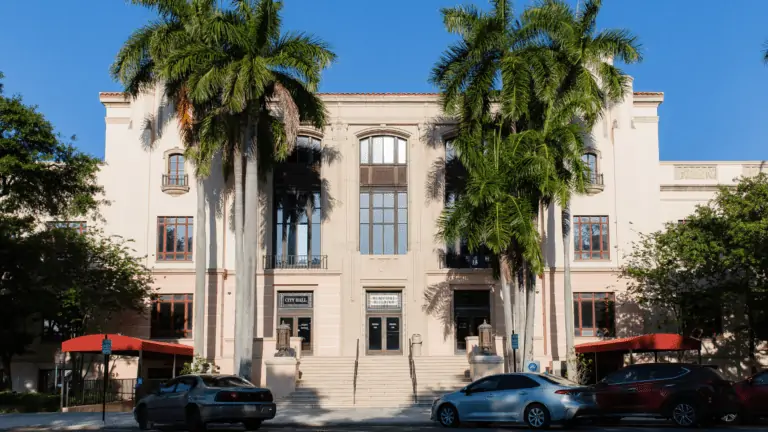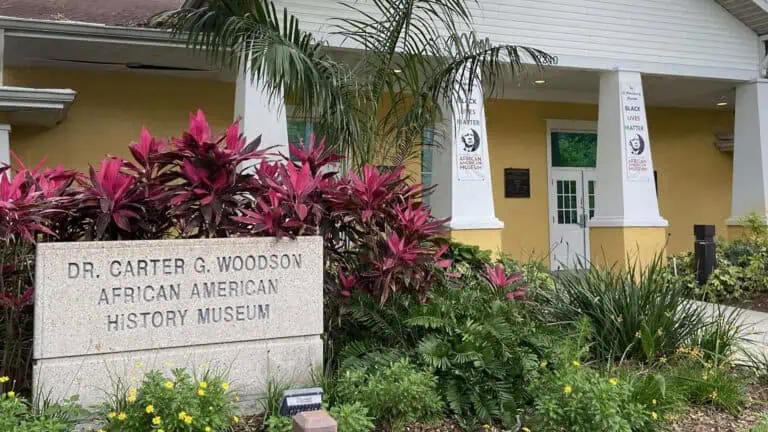“Mirror Lake was made by nature the civic center of St. Petersburg, and the civic center of St. Petersburg it will forever be. St. Petersburg’s only need will be to preserve all the natural beauties and charms of Mirror Lake, place all the city’s public buildings and show places at strategic places around it, and watch it grow into one of the beauty spots of America.”
Those are the words of preeminent urban planner John Nolen, who spent time in St. Petersburg in the 1920s working on a city plan that was ultimately not adopted. But today Mirror Lake is being re-discovered as one of the beauty spots of America, and is fulfilling Nolen’s prophecy of a civic center, with a new federal courthouse under construction, new condominiums rising, and one of the most striking single-family homes in the city poised for a stunning renovation—the 1936 stone house at 250 Mirror Lake Drive built by early St. Pete developer Cade Allen. The house was recently purchased by local developers Backstreets Capital, who have assembled a team of experts to restore the home to its original glory. “We’re excited to bring this historic gem back to life,” said Elizabeth Hallock of EDAD Studio, the award-winning local architect overseeing the restoration design for Backstreets.
ADVERTISEMENT
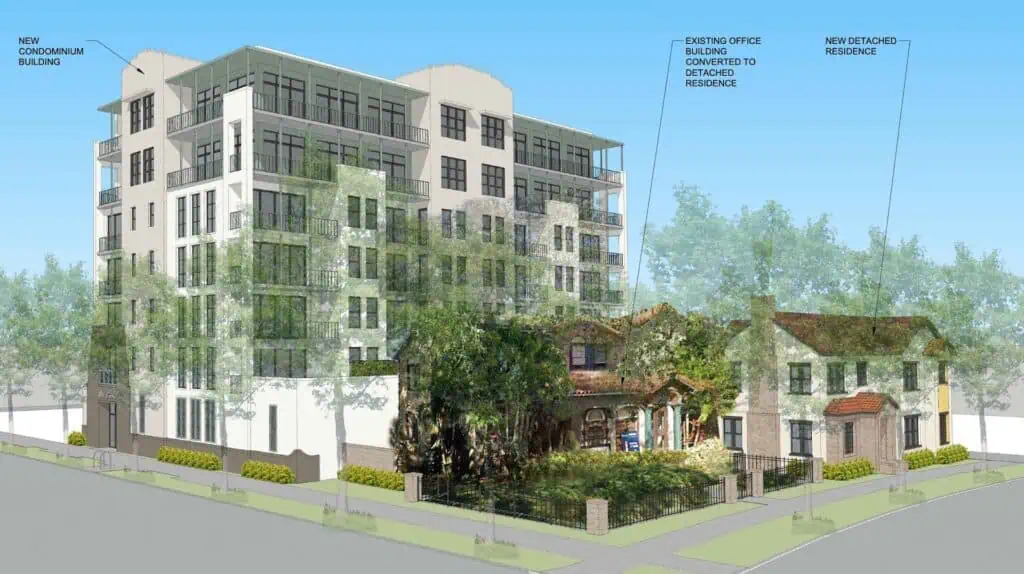
The City of St. Petersburg has placed its most prominent civic buildings on the lake’s shores for decades. These included the first library, built with a grant from the Carnegie Foundation in 1915, its first five schools (three of which remain standing on or near the lake today), City Hall (1938), two churches (1926 and 1929), and a sprawling recreation center that included the World’s Largest Shuffleboard Club (1924), the Lawn Bowling Club (1917), the Chess Club (or Chess Divan as it was called from the 1930s to the 1950s), and the Coliseum (1924) which was reputed to have the largest dance floor in the South.
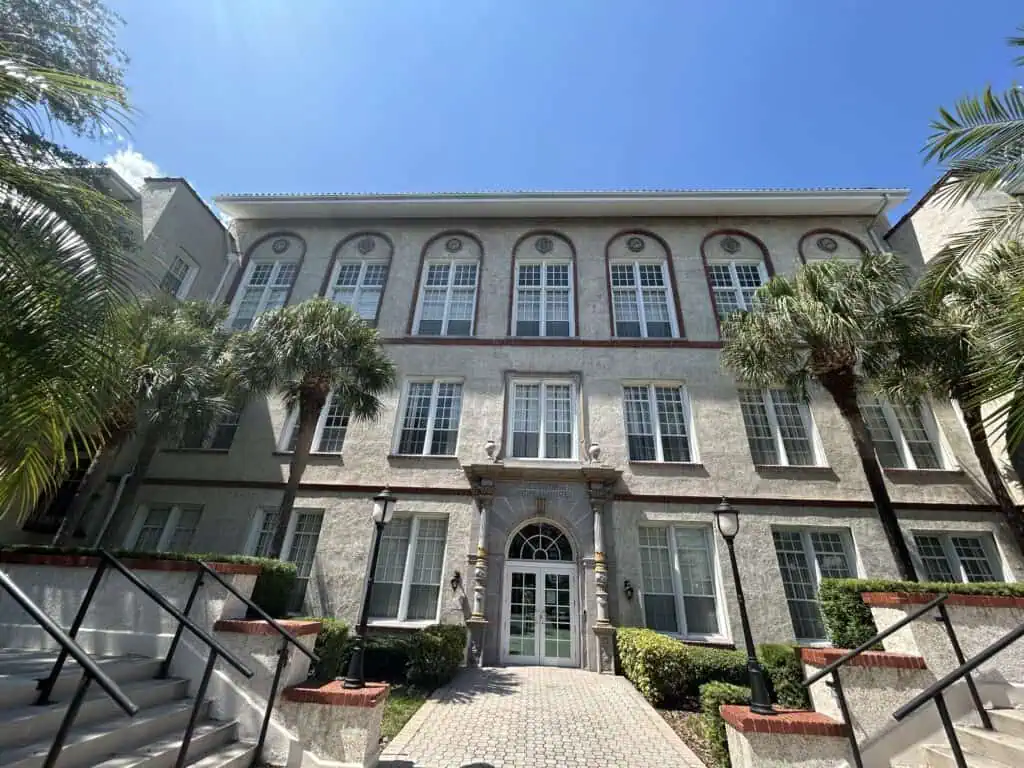
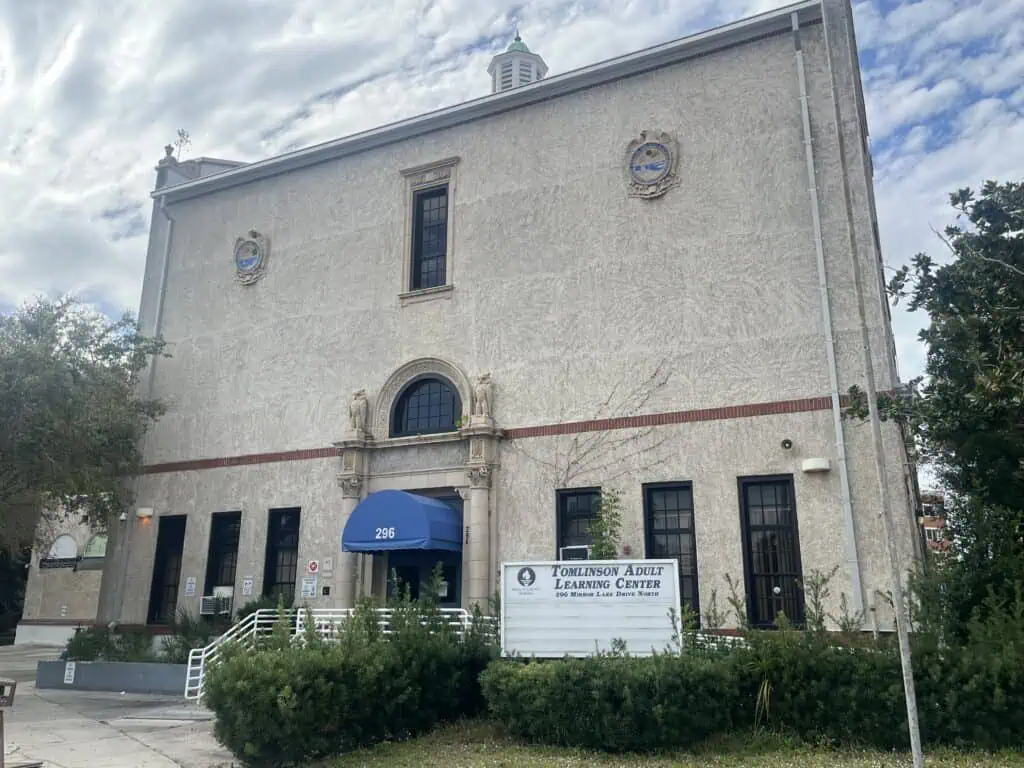
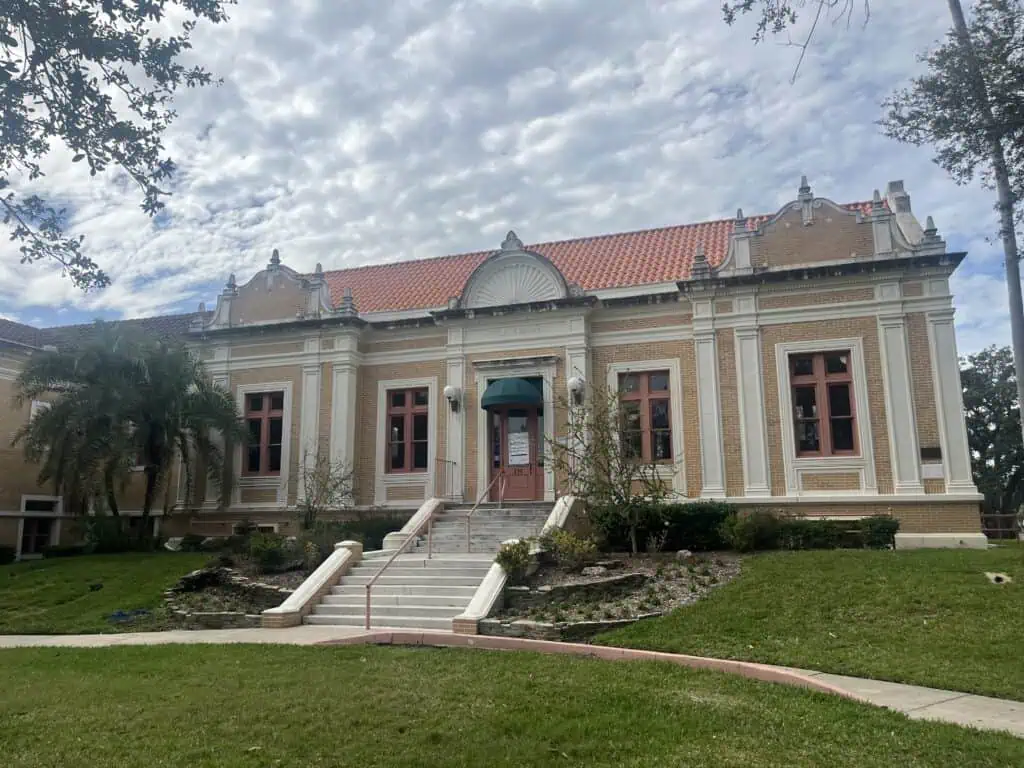
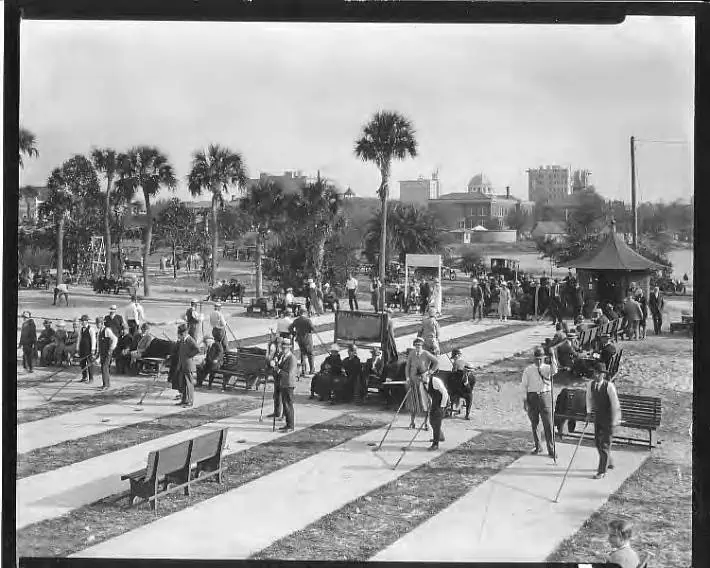
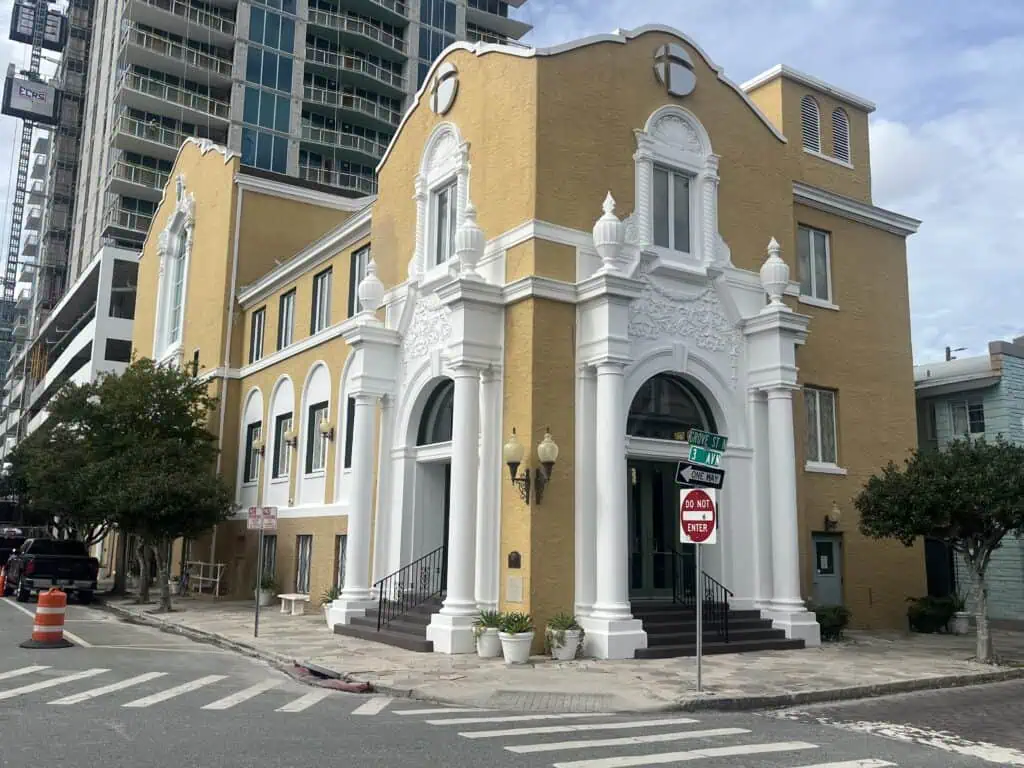
was built in 1926.
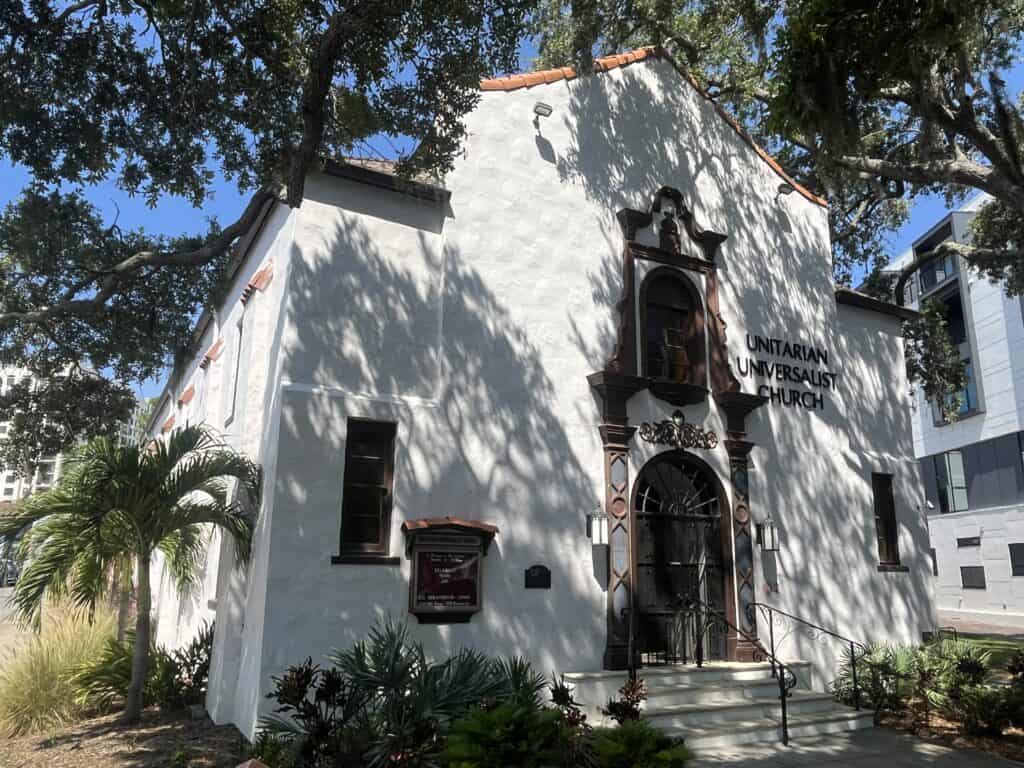
was built in 1929
Even before these improvements, the lake had been serving the city for a generation. Originally called Lake Wier after the owner of the orange grove on its banks, the name was later changed to Reservoir Lake, a fitting name for the body of water that became the city’s first source of drinking water. Even Teddy Roosevelt’s Rough Riders, stationed in Tampa during the Spanish American War, took advantage of the fresh water, building a pipe from the lake to St. Petersburg’s Railroad Pier in order to ship fresh water to Tampa to supply ships going to fight in Cuba. The lake’s name was changed again in 1915 when local environmentalist Katherine Bell Tippetts, who owned a hotel nearby, argued that the lake deserved a more picturesque name. She took as her inspiration the name of the newspaper that her husband was editor of in New York: The Lake George Mirror.
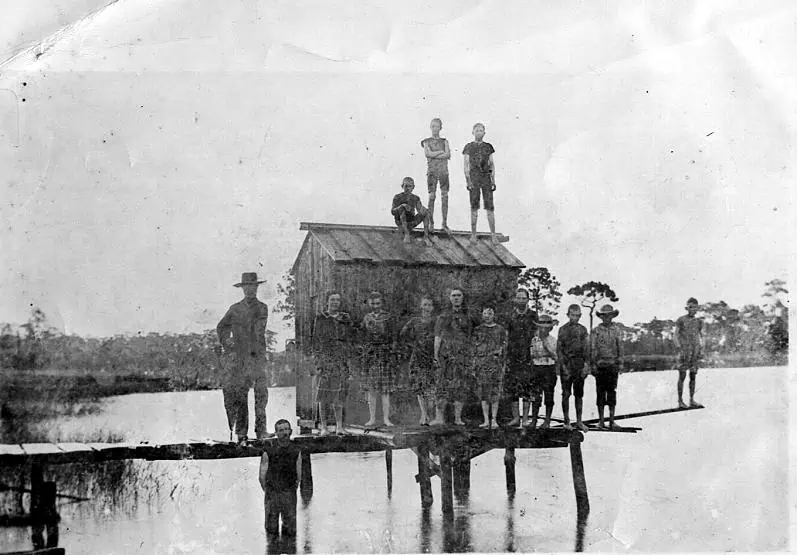
This photo is from the 1890s.
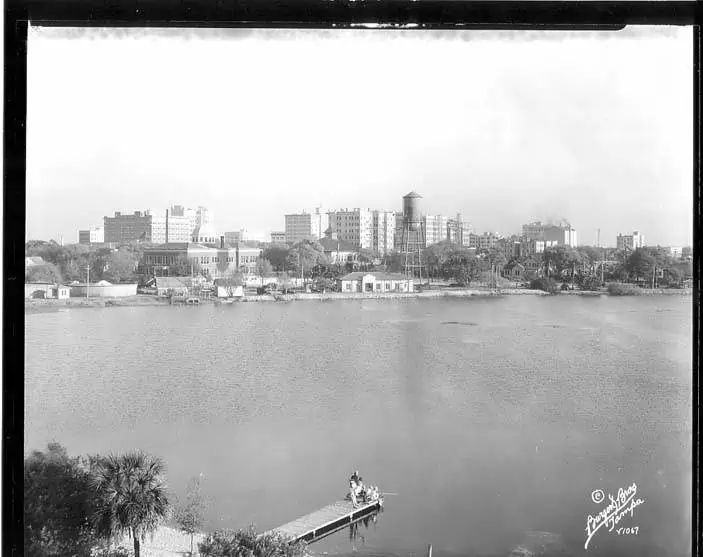
During St. Pete’s heyday of the 1920s, Mirror Lake was a tourist mecca, with hundreds of apartments and single-family homes for rent during the winter season. Newspaper advertisements touted rental homes’ proximity to the recreation center of Mirror Lake, and the lake even featured in a short story by the country’s most prominent sports writer, Ring Lardner. The Golden Honeymoon depicts a couple celebrating their 50th anniversary with a vacation in St. Petersburg and offers a charming portrait of St. Pete and Mirror Lake in the 1920s.
As suburban sprawl and interstate expansion took a toll on the city’s urban core, St. Petersburg entered a period of decline from the 1960s through the 1990s and Mirror Lake suffered alongside its downtown neighbors. As the city has enjoyed a renaissance over the past 20 years, visitors and residents alike have once again recognized the beauty and charm of the natural lake. Debates between historic preservation and development have caused tension in recent years, as many of the tourist apartment buildings from the 1920s were demolished.
History buffs and architecture fans worried about the future of the home at 250 Mirror Lake, built in 1936 as the private home of Mrs. Ena Jackson, widow of the proprietor of the Jackson Ice Company. Designed and constructed by brick mason-turned-developer Cade Allen (who imported stone from throughout the Southeast for use on the facades of the 50+ houses he built in Allendale and elsewhere in the city), the home was called “the most beautiful and luxurious in the city” by the St. Petersburg Times in 1937. Ena lived in the home for more than 20 years. Most recently it has served as office space.
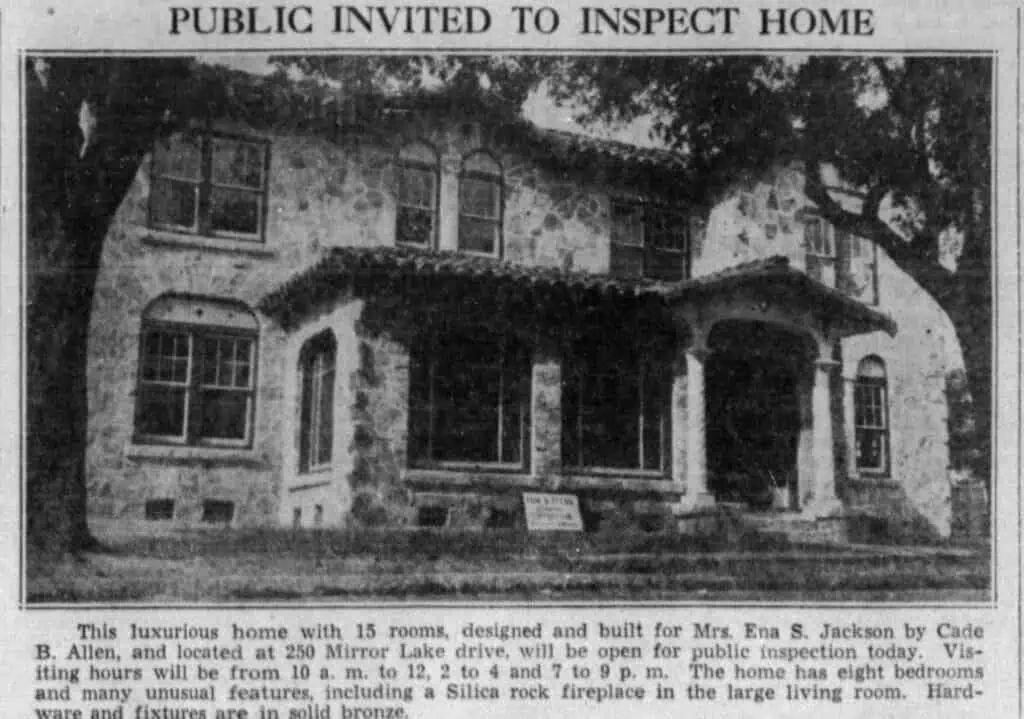
As million-dollar condominiums rise around it, the community feared that the economic potential of the property fronting Mirror Lake would ultimately doom the house to demolition. But a local developer recognized the value of the historic home, and came up with a creative solution to save and restore the house, while still maximizing the property’s potential.
Will Conroy of Backstreets Capital said, “In St. Petersburg’s competitive real estate market, we’re focused on creating developments that stand out. Single-family homes in downtown are almost non-existent, and the historic Cade Allen home is a unicorn in this environment.”
Creativity has always been a part of preserving Mirror Lake’s character. The beautiful 1919 high school building was saved and converted into residences in 1991. Similarly, the Tomlinson Center that was once a middle school (built in 1924) and later an adult learning center, is being redeveloped to include affordable residences for teachers. Bridgepoint Church, originally built at Mirror Lake Christian Church in 1926, spent many years as an event space called The Lyceum. Both the Unitarian Universalist and Bridgepoint Churches raised money for their congregations by selling adjacent parking for residential and commercial development.
The shaded banks of Mirror Lake offer some of the best views of downtown, and with the breezes off the water, it might be the coolest place to take a stroll in the city. And soon it will be someone’s front yard again, just as it was for Ena Jackson. With new residences, historic attractions, and community essentials, Mirror Lake is getting another day in the sun.
Want to learn more about St. Pete history? Hop aboard the Looper trolley with Monica for a history tour of St. Pete. Held monthly, space is limited and tours usually sell out. Get your tickets today.
ADVERTISEMENT




